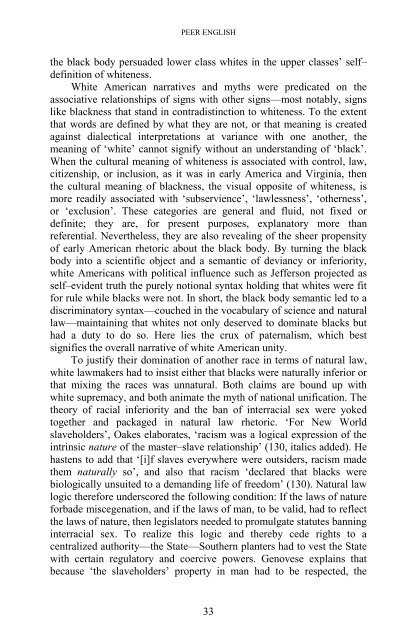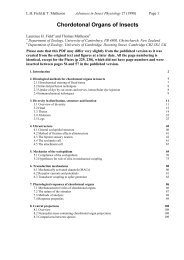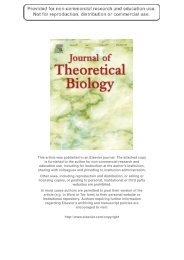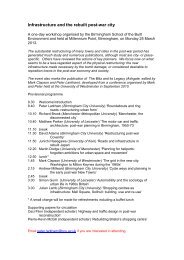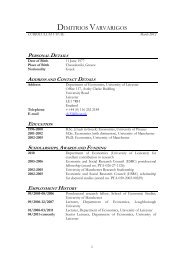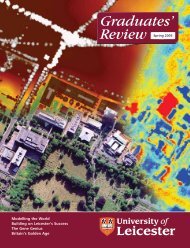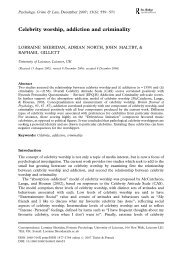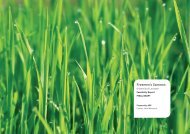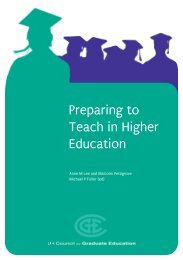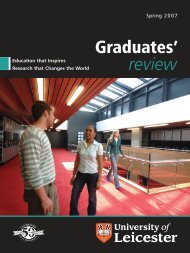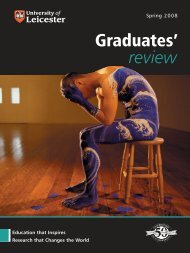From Natural Law to Natural Inferiority
From Natural Law to Natural Inferiority
From Natural Law to Natural Inferiority
Create successful ePaper yourself
Turn your PDF publications into a flip-book with our unique Google optimized e-Paper software.
PEER ENGLISHthe black body persuaded lower class whites in the upper classes’ self–definition of whiteness.White American narratives and myths were predicated on theassociative relationships of signs with other signs—most notably, signslike blackness that stand in contradistinction <strong>to</strong> whiteness. To the extentthat words are defined by what they are not, or that meaning is createdagainst dialectical interpretations at variance with one another, themeaning of ‘white’ cannot signify without an understanding of ‘black’.When the cultural meaning of whiteness is associated with control, law,citizenship, or inclusion, as it was in early America and Virginia, thenthe cultural meaning of blackness, the visual opposite of whiteness, ismore readily associated with ‘subservience’, ‘lawlessness’, ‘otherness’,or ‘exclusion’. These categories are general and fluid, not fixed ordefinite; they are, for present purposes, explana<strong>to</strong>ry more thanreferential. Nevertheless, they are also revealing of the sheer propensityof early American rhe<strong>to</strong>ric about the black body. By turning the blackbody in<strong>to</strong> a scientific object and a semantic of deviancy or inferiority,white Americans with political influence such as Jefferson projected asself–evident truth the purely notional syntax holding that whites were fitfor rule while blacks were not. In short, the black body semantic led <strong>to</strong> adiscrimina<strong>to</strong>ry syntax—couched in the vocabulary of science and naturallaw—maintaining that whites not only deserved <strong>to</strong> dominate blacks buthad a duty <strong>to</strong> do so. Here lies the crux of paternalism, which bestsignifies the overall narrative of white American unity.To justify their domination of another race in terms of natural law,white lawmakers had <strong>to</strong> insist either that blacks were naturally inferior orthat mixing the races was unnatural. Both claims are bound up withwhite supremacy, and both animate the myth of national unification. Thetheory of racial inferiority and the ban of interracial sex were yoked<strong>to</strong>gether and packaged in natural law rhe<strong>to</strong>ric. ‘For New Worldslaveholders’, Oakes elaborates, ‘racism was a logical expression of theintrinsic nature of the master–slave relationship’ (130, italics added). Hehastens <strong>to</strong> add that ‘[i]f slaves everywhere were outsiders, racism madethem naturally so’, and also that racism ‘declared that blacks werebiologically unsuited <strong>to</strong> a demanding life of freedom’ (130). <strong>Natural</strong> lawlogic therefore underscored the following condition: If the laws of natureforbade miscegenation, and if the laws of man, <strong>to</strong> be valid, had <strong>to</strong> reflectthe laws of nature, then legisla<strong>to</strong>rs needed <strong>to</strong> promulgate statutes banninginterracial sex. To realize this logic and thereby cede rights <strong>to</strong> acentralized authority—the State—Southern planters had <strong>to</strong> vest the Statewith certain regula<strong>to</strong>ry and coercive powers. Genovese explains thatbecause ‘the slaveholders’ property in man had <strong>to</strong> be respected, the33


